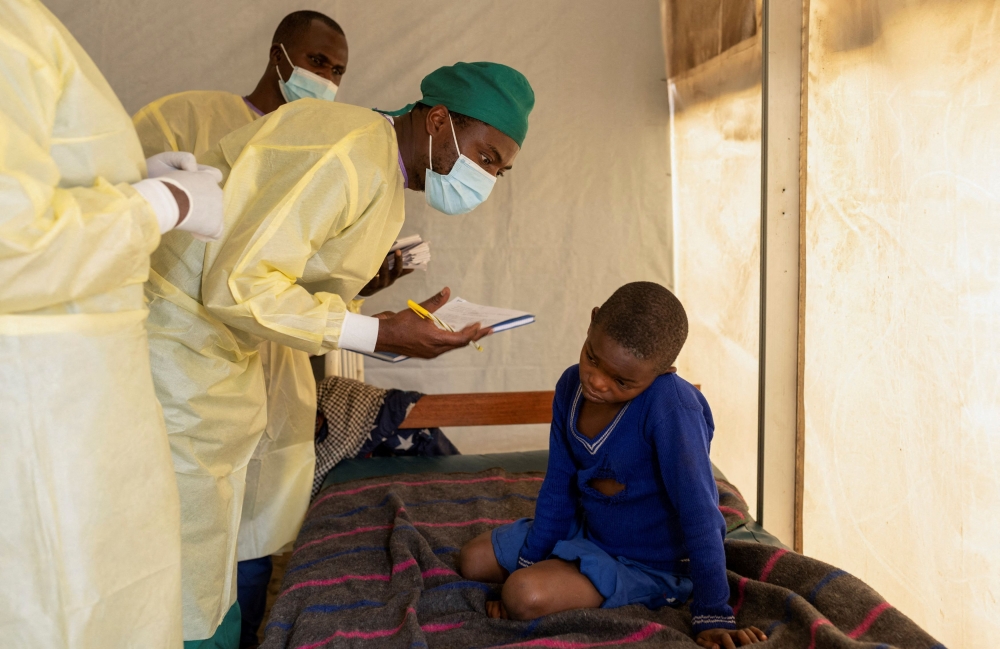KUALA LUMPUR, Aug 15 — A recent surge in mpox (previously known as monkeypox) cases in Africa, particularly in the Democratic Republic of Congo (DR Congo), has prompted the World Health Organisation (WHO) to declare it a global public health emergency.
The Ministry of Health is closely monitoring the situation, and Health Director-General Datuk Dr Muhammad Radzi Abu Hassan has assured that a statement on the country’s response will be issued soon.
“We are following closely on the mpox development and progress. We’re aware of the latest. Will come up with a statement soon,” he told Malay Mail when contacted.
The Health Ministry has since released a statement on mpox, available on its Facebook page here.
But what exactly is mpox, and should we be as concerned as we were with Covid-19?
What is mpox?
Mpox is a viral illness caused by the monkeypox virus, a member of the orthopoxvirus genus along with smallpox.
The name monkeypox was originally coined because the disease was first identified in laboratory monkeys, but was subsequently criticised as a misnomer because monkeys are not the main host or reservoir, as well as concerns over the stigma about African countries as a source of the disease.
The disease presents with symptoms similar to smallpox, including a skin rash or mucosal lesions that can last two to four weeks.
Other symptoms include fever, headache, muscle aches, back pain, low energy and swollen lymph nodes.
Why is it a PHEIC?
A Public Health Emergency of International Concern (PHEIC) is the highest level of alarm under the International Health Regulations, used to identify and manage extraordinary events that pose a risk to public health across international borders, which are legally binding on 196 countries.
The WHO declared the mpox outbreak a PHEIC for the first time on July 23, 2022, following a rise in global infections, particularly in countries that had never reported cases before.
The current PHEIC and second in-a-row for mpox is driven by more than 14,000 cases and 524 deaths reported this year in the DR Congo alone, surpassing last year’s total, which underscores the urgency of the situation and the need for coordinated global action.

How does mpox spread and how to treat it?
- Mpox is transmitted through direct or close contact with infectious skin lesions or bodily fluids, as well as through respiratory droplets during prolonged face-to-face interactions.
- It can also spread through contact with contaminated objects like clothing or linens.
- Pregnant women with mpox can pass the virus to the foetus during pregnancy or newborn at birth
- High-risk groups include household members and sexual partners of infected individuals, as well as those with multiple sexual partners.
- Treatment for mpox focuses on managing symptoms, particularly the rash and pain, and preventing complications
- Isolation of infected individuals is crucial to prevent the spread of the virus.
Is there a vaccine for mpox?
While there is no specific treatment for mpox, vaccines and therapeutics developed for smallpox can be used in some cases.
Vaccination is most effective if administered within four days of exposure and is recommended for high-risk groups, including healthcare workers, men who have sex with men, and sex workers.
Is mpox already here in Malaysia?
Yes. In Malaysia, the most recent reported cases of mpox occurred between October 31 and November 29 last year, with five new cases bringing the total to nine.
The last case, confirmed on November 10, involved a 40-year-old man who showed symptoms of fever and blistering.
Is this another Covid-19?
According to the American Society for Microbiology, while mpox is a serious public health concern, the modes of transmission, severity of illness and global spread are different.
Unlike Covid-19, which spreads rapidly and widely due to its high transmissibility, mpox spreads primarily through close contact and has a lower transmission rate.
However, the designation of a PHEIC highlights the importance of vigilance, particularly in high-risk populations.





















